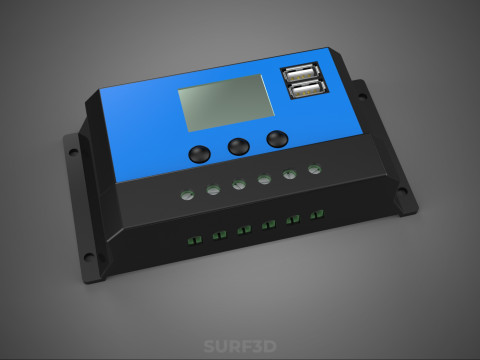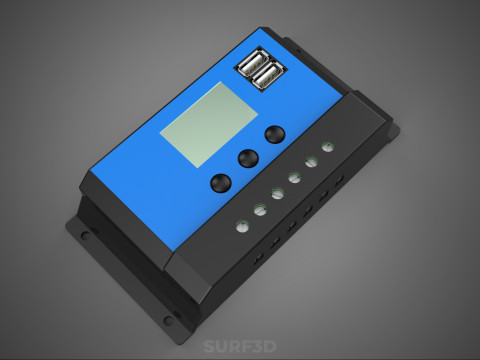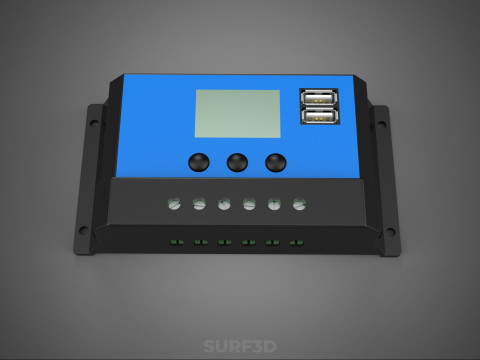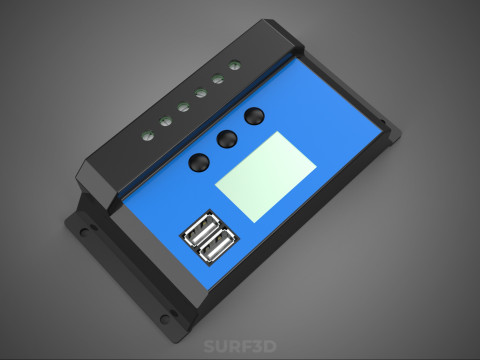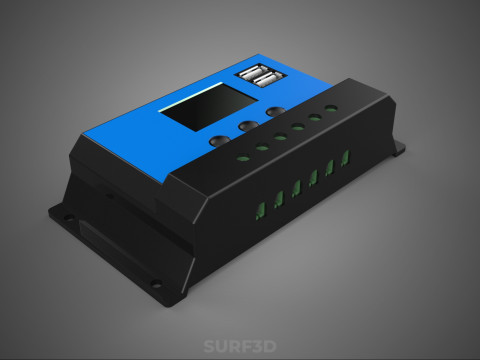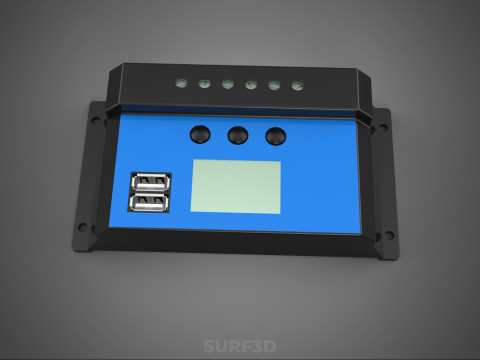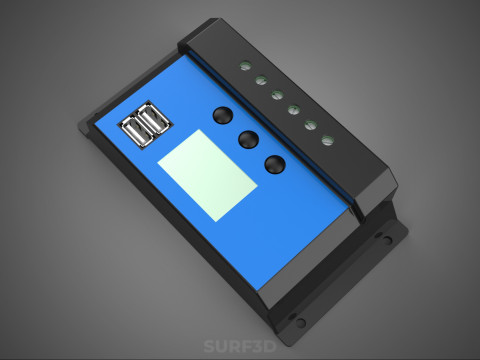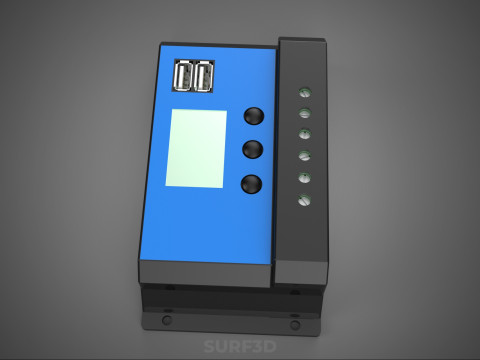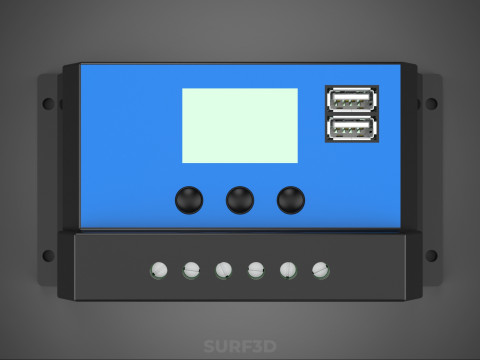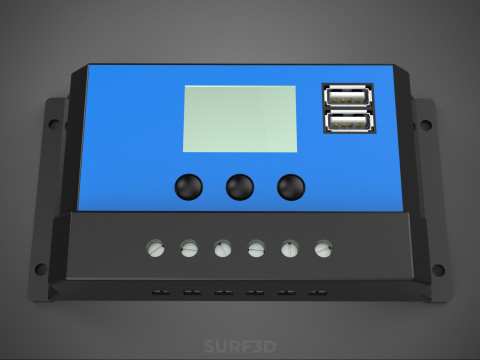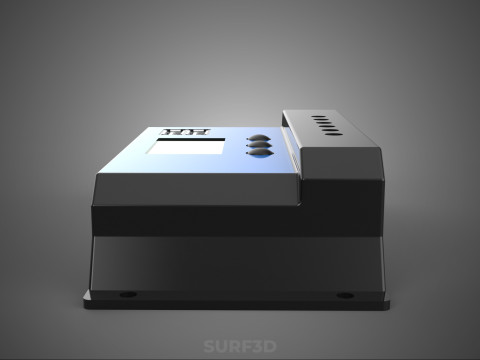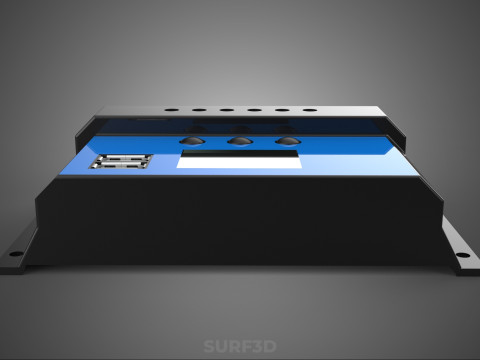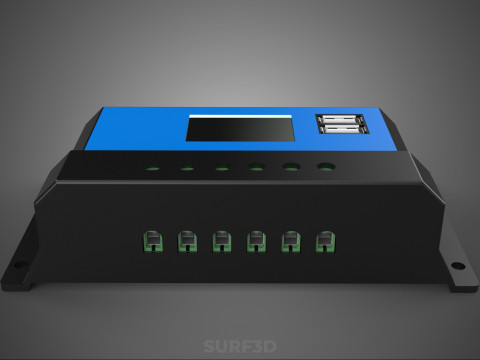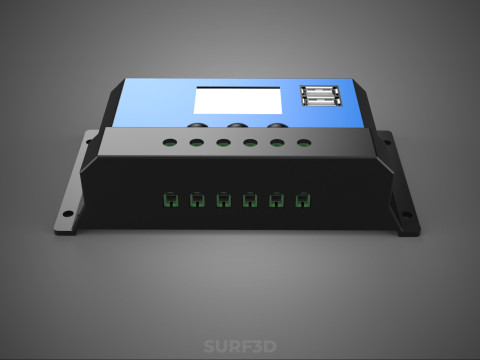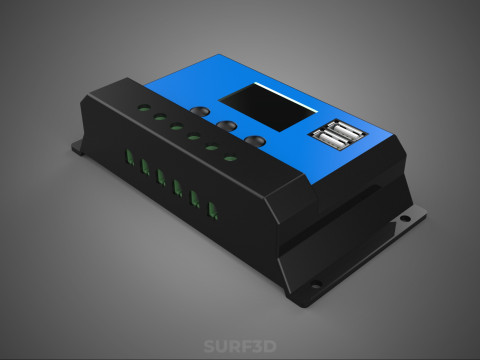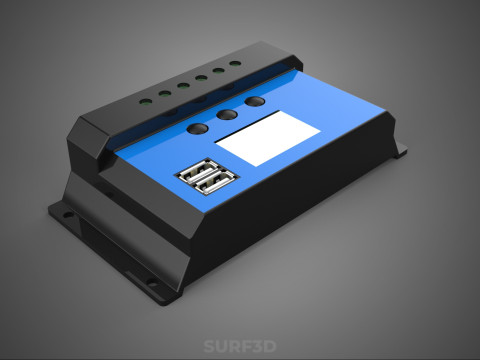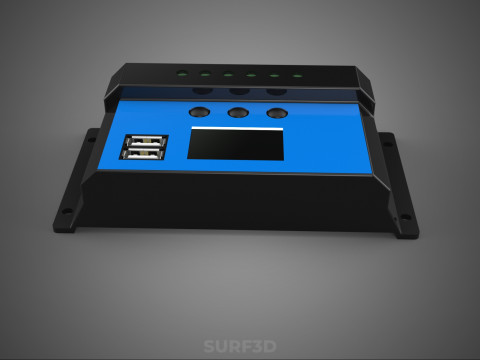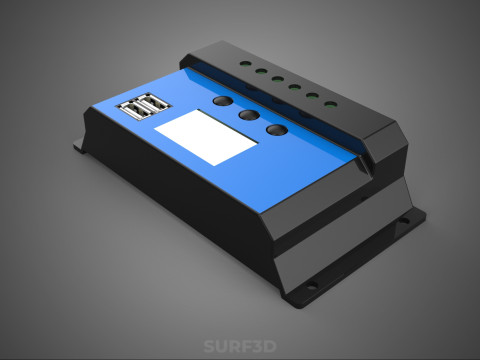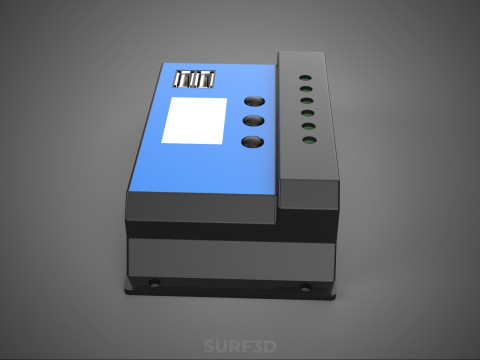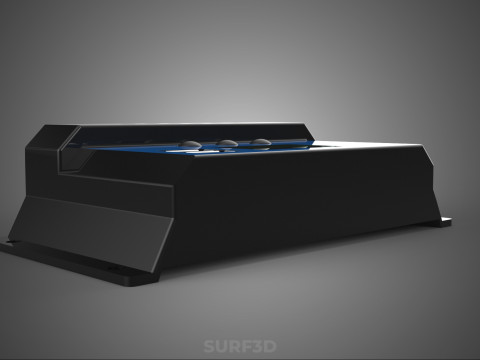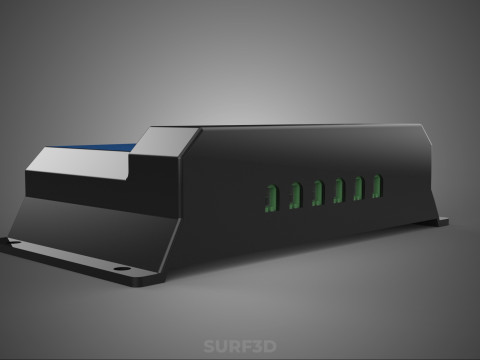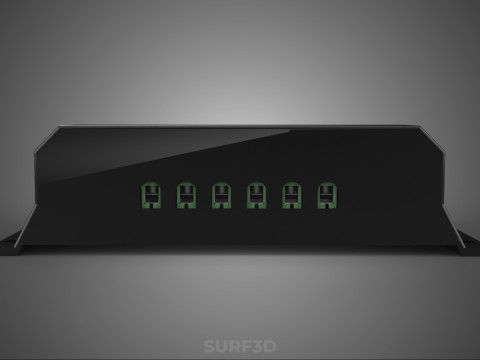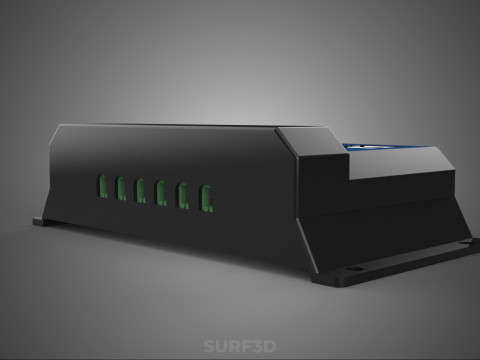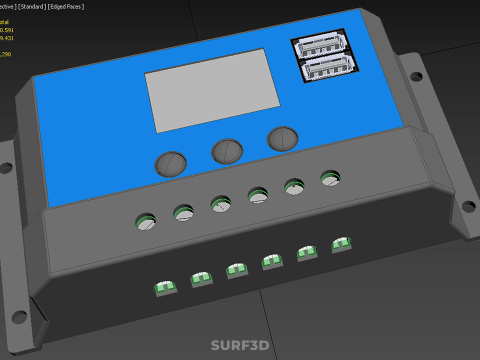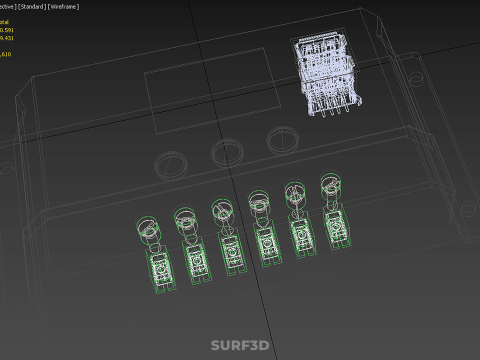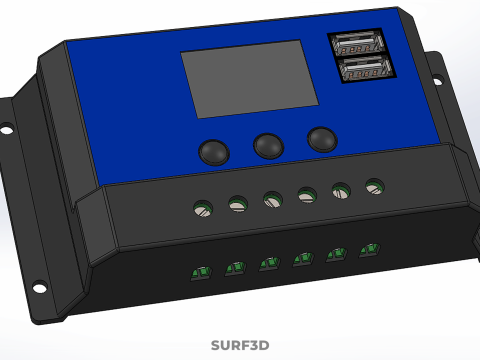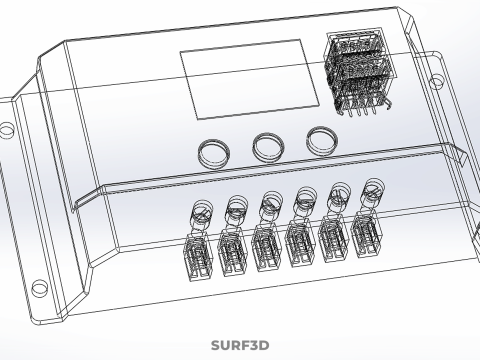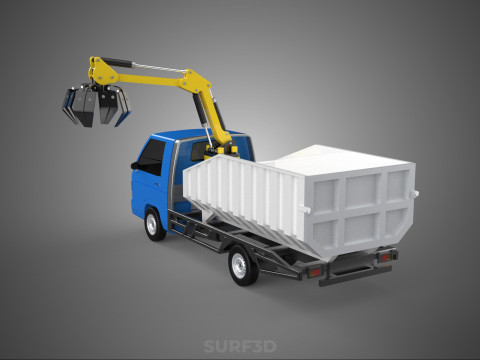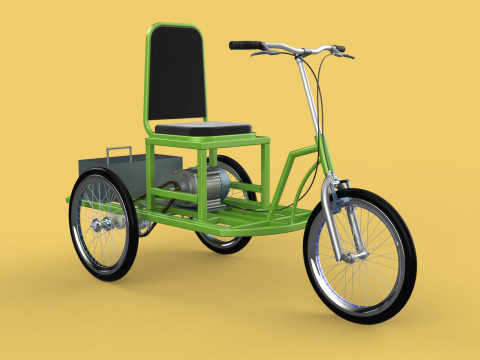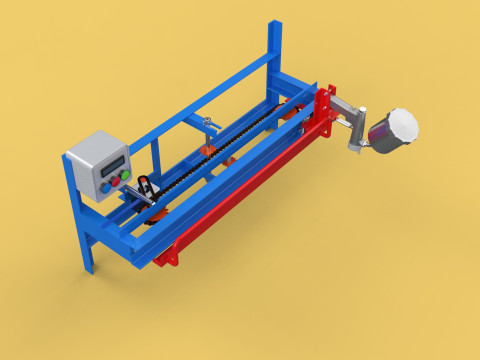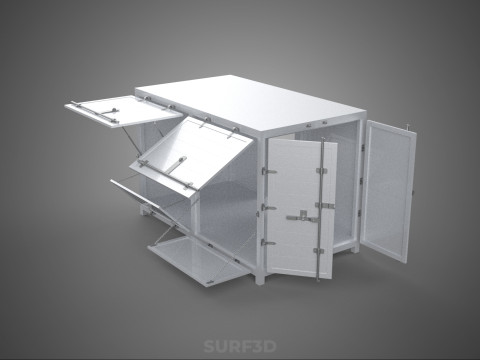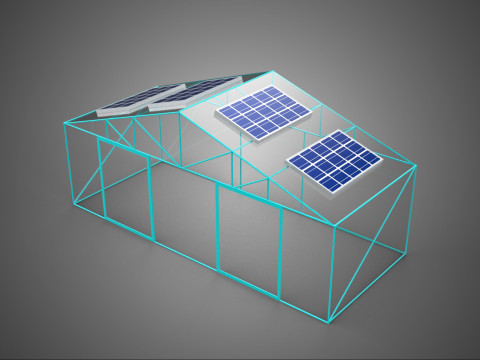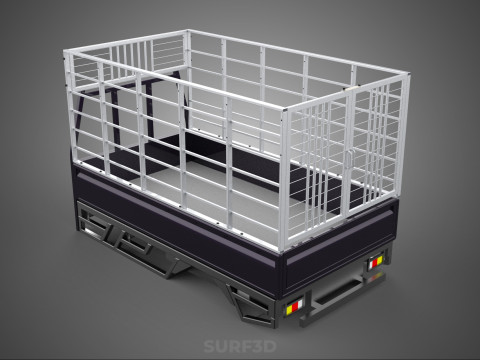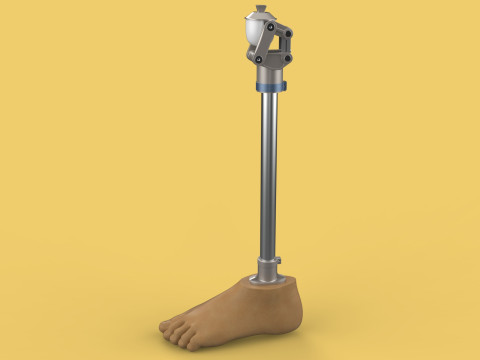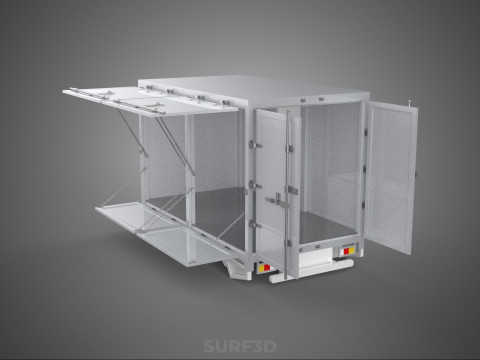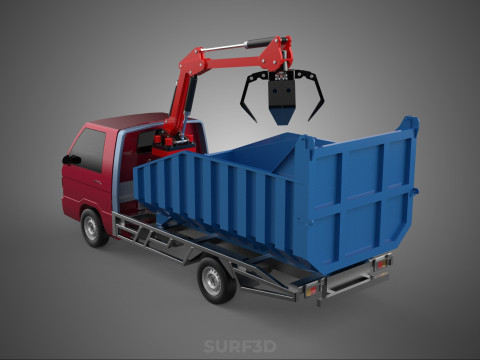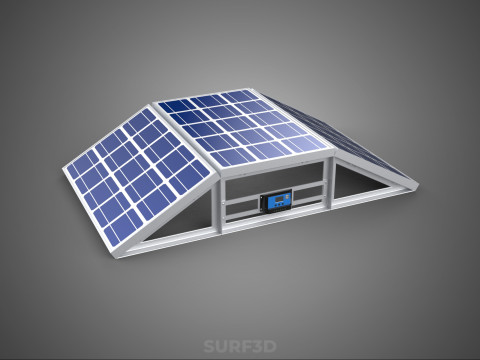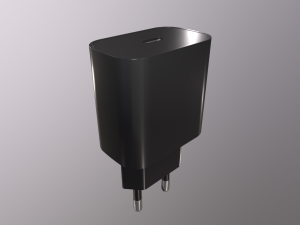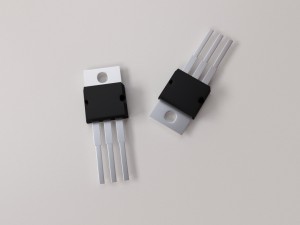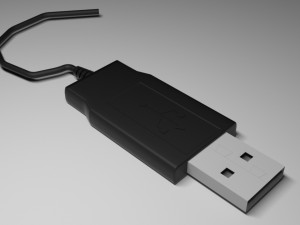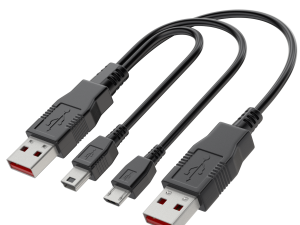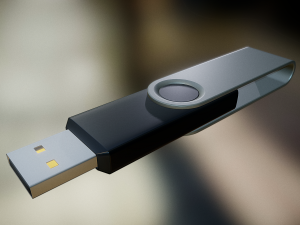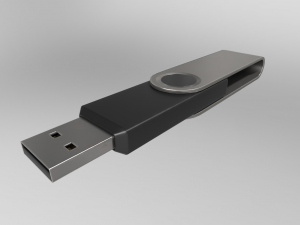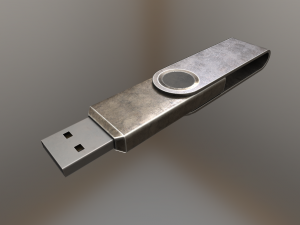STEROWNIK PANELÓW SŁONECZNYCH ŁADOWANIE AKUMULATORA PWM REGULATOR PV USB Model 3D
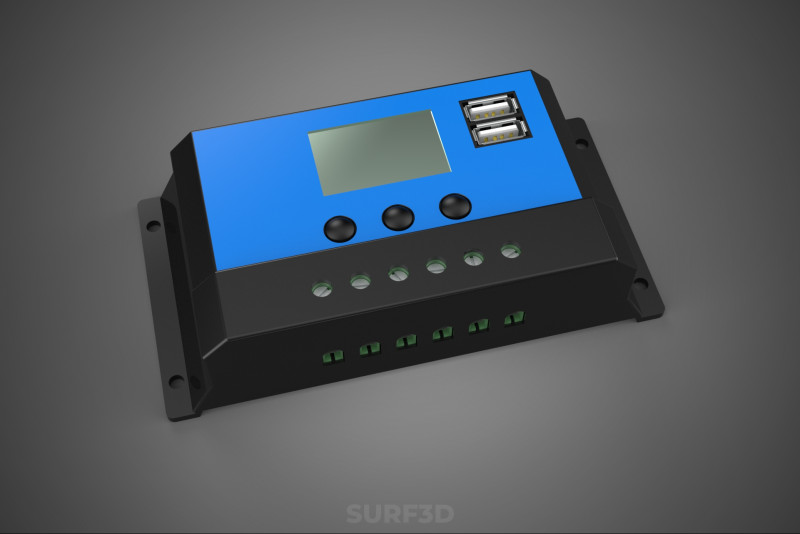
- Poproś autora o wsparcie produktu
- Dostępne formaty:
- ID produktu:595409
- Data: 2025-08-28
- Wielokąty:40591
- Wierzchołki:39431
- Model animowany:No
- Tekstury:No
- Oparty na szkielecie:No
- Materiał:
- Low-poly:No
- Kolekcja:No
- UVW mapping:No
- Plugins Used:No
- Gotowy do wydruku:No
- 3D Scan:No
- Adult content:No
- PBR:No
- AI Szkolenie:No
- Geometria:Poly NURBS
- Unwrapped UVs:Unknown
- Liczba wyświetleń:284
Opis
High-quality 3D assets at affordable prices — trusted by designers, engineers, and creators worldwide. Made with care to be versatile, accessible, and ready for your pipeline.
Included File Formats
This model is provided in 14 widely supported formats, ensuring maximum compatibility:
• - FBX (.fbx) – Standard format for most 3D software and pipelines
• - OBJ + MTL (.obj, .mtl) – Wavefront format, widely used and compatible
• - STL (.stl) – Exported mesh geometry; may be suitable for 3D printing with adjustments
• - STEP (.step, .stp) – CAD format using NURBS surfaces
• - IGES (.iges, .igs) – Common format for CAD/CAM and engineering workflows (NURBS)
• - SAT (.sat) – ACIS solid model format (NURBS)
• - DAE (.dae) – Collada format for 3D applications and animations
• - glTF (.glb) – Modern, lightweight format for web, AR, and real-time engines
• - 3DS (.3ds) – Legacy format with broad software support
• - 3ds Max (.max) – Provided for 3ds Max users
• - Blender (.blend) – Provided for Blender users
• - SketchUp (.skp) – Compatible with all SketchUp versions
• - AutoCAD (.dwg) – Suitable for technical and architectural workflows
• - Rhino (.3dm) – Provided for Rhino users
Model Info
• - All files are checked and tested for integrity and correct content
• - Geometry uses real-world scale; model resolution varies depending on the product (high or low poly)
• • - Scene setup and mesh structure may vary depending on model complexity
• - Rendered using Luxion KeyShot
• - Affordable price with professional detailing
Buy with confidence. Quality and compatibility guaranteed.
If you have any questions about the file formats, feel free to send us a message — we're happy to assist you!
Sincerely,
SURF3D
Trusted source for professional and affordable 3D models.
More Information About 3D Model :
A solar charge controller, often referred to as a PV (Photovoltaic) regulator, is an indispensable component in off-grid solar power systems. The device specified as a "SOLAR CELL PANEL CONTROLLER BATTERY CHARGE PWM PV REGULATOR with USB and display" integrates several key functionalities to manage the energy flow from solar panels to a battery bank, simultaneously offering auxiliary power outputs and system monitoring capabilities.
**Core Functionality and Purpose**
The primary function of a solar charge controller is to regulate the voltage and current received from solar panels before it reaches the battery. This regulation is crucial to prevent overcharging, which can severely damage batteries by causing electrolyte boiling, plate corrosion, or thermal runaway. Conversely, the controller also prevents over-discharge by disconnecting loads when the battery voltage drops below a safe threshold, thereby extending the battery's lifespan and maintaining overall system integrity. It ensures the battery is charged optimally, following various charging stages to maximize its capacity and longevity.
**Pulse Width Modulation (PWM) Technology**
This particular controller utilizes Pulse Width Modulation (PWM) technology for battery charging. PWM controllers operate by rapidly switching the connection between the solar panel and the battery on and off multiple times per second. By adjusting the duration of the "on" pulses (the pulse width), the controller effectively regulates the average voltage and current supplied to the battery. This method allows the battery to spend more time in the "absorption" charging stage, which is vital for a complete and healthy charge. While generally less complex and more cost-effective than Maximum Power Point Tracking (MPPT) controllers, PWM technology is highly effective for many applications, especially where the solar panel voltage closely matches the battery bank voltage (e.g., 12V panel with a 12V battery system). PWM controllers typically support the three-stage charging process: bulk, absorption, and float.
**Integrated USB Ports**
A notable feature of this controller is the inclusion of integrated Universal Serial Bus (USB) ports. These ports provide a regulated 5V DC output, typically rated for currents such as 1A or 2A. This functionality allows users to directly charge small electronic devices, including smartphones, tablets, and other USB-powered gadgets, without the need for additional inverters or adapters. This enhances the versatility and convenience of the solar power system, making it a self-contained solution for both battery maintenance and personal device charging.
**Digital Display for System Monitoring**
The integrated digital display, often an LCD or LED screen, provides users with real-time, comprehensive information regarding the solar power system's operational status. Key parameters typically displayed include:
* **Battery Voltage:** The current voltage level of the connected battery bank.
* **PV Voltage:** The voltage being generated by the connected solar panels.
* **Charging Current:** The magnitude of current flowing from the solar panels to the battery.
* **Load Current:** The current drawn by any DC loads connected directly to the controller's load output terminals.
* **Battery State of Charge (SoC):** An estimation of the battery's remaining capacity, often shown as a percentage or graphical indicator.
* **Temperature:** Ambient or battery temperature, if an external sensor is connected.
* **Error Codes and Warnings:** Indicators for system faults, such as short circuits, overloads, or abnormal conditions.
This visual interface facilitates easy monitoring, troubleshooting, and potential configuration of certain controller parameters, enhancing user awareness and control over the solar installation.
**Safety and Protection Mechanisms**
Modern solar charge controllers are equipped with multiple protection features to ensure the safety and longevity of all connected components:
* **Overcharge Protection:** Prevents battery damage from excessive voltage.
* **Over-discharge Protection:** Disconnects loads to protect the battery from deep discharge.
* **Reverse Polarity Protection:** Guards against damage from incorrect wiring of solar panels, battery, or loads.
* **Short Circuit Protection:** Protects against damage from accidental short circuits in the system.
* **Overload Protection:** Prevents damage from excessive current draw on the load output.
* **Reverse Current Protection:** Prevents current from flowing back from the battery to the solar panels during periods of low light or darkness.
**Applications**
This type of solar charge controller is suitable for a wide array of off-grid and standalone solar power applications. Common uses include small residential setups (e.g., cabins, sheds), recreational vehicles (RVs), camper vans, marine vessels, garden lighting systems, remote surveillance cameras, and various portable solar power kits. Its combined features of efficient PWM charging, direct USB charging capability, and comprehensive display make it a highly functional and user-friendly solution for managing and utilizing solar energy.
KEYWORDS: Solar charge controller, PV regulator, PWM, Pulse Width Modulation, Battery charger, Solar panel, Photovoltaic, Off-grid, Battery management, USB output, Digital display, System monitoring, Battery protection, Overcharge protection, Over-discharge protection, Lead-acid battery, 12V system, 24V system, Solar power system, Renewable energy, DC load, Charge current, Battery voltage, Solar array, Portable power, RV solar, Marine solar, Standalone power, Energy management, Remote power, Micro-grid.
Potrzebujesz plik w innym formacie?
Jeśli potrzebny Ci plik w innym formacie, zgłoś taką potrzebę przez opcję Support Ticket Konwertujemy produkty na następujące formaty: .stl, .c4d, .obj, .fbx, .ma/.mb, .3ds, .3dm, .dxf/.dwg, .max. .blend, .skp, .glb. Dowolna konwersja formatuNie konwertujemy scen 3D oraz formaty takie jak .step, .iges, .stp, .sldprt.!
Informacje o użytkowaniu
STEROWNIK PANELÓW SŁONECZNYCH ŁADOWANIE AKUMULATORA PWM REGULATOR PV USB - Możesz używać tego bezpłatnego modelu 3D zarówno do celów osobistych, jak i komercyjnych, zgodnie z Licencją Podstawową lub Rozszerzoną.Licencja Podstawowa obejmuje większość standardowych przypadków użycia, w tym reklamy cyfrowe, projekty projektowe i wizualizacyjne, firmowe konta w mediach społecznościowych, aplikacje natywne, aplikacje internetowe, gry wideo oraz fizyczne lub cyfrowe produkty końcowe (zarówno bezpłatne, jak i sprzedawane).
Licencja Rozszerzona obejmuje wszystkie prawa udzielone na mocy Licencji Podstawowej, bez ograniczeń użytkowania i pozwala na wykorzystanie modelu 3D w nieograniczonej liczbie projektów komercyjnych na warunkach bezpłatności.
Czytaj więcej


 English
English Español
Español Deutsch
Deutsch 日本語
日本語 Polska
Polska Français
Français 中國
中國 한국의
한국의 Українська
Українська Italiano
Italiano Nederlands
Nederlands Türkçe
Türkçe Português
Português Bahasa Indonesia
Bahasa Indonesia Русский
Русский हिंदी
हिंदी